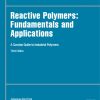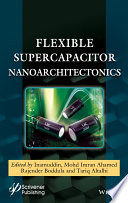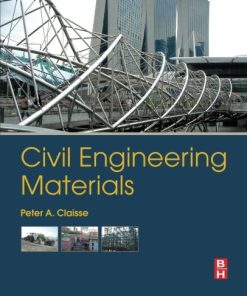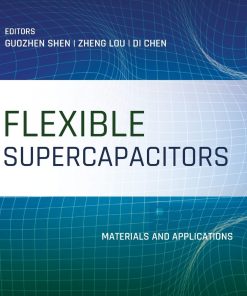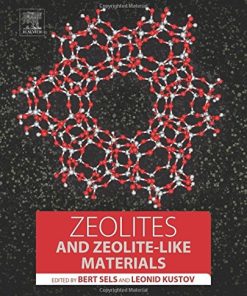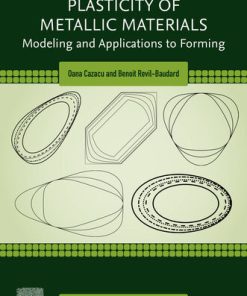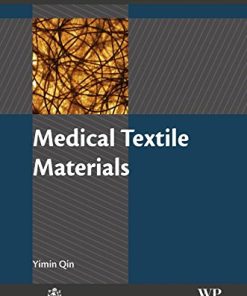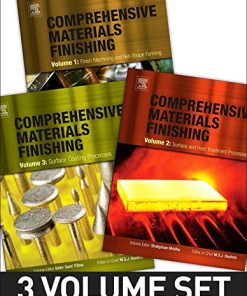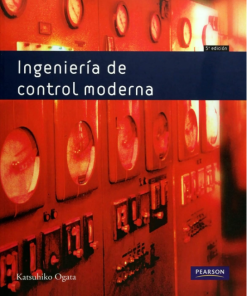(EBook PDF) Supra Materials Nanoarchitectonics 1st Edition by Katsuhiko Ariga 0323994733 9780323994736 full chapters
$50.00 Original price was: $50.00.$25.00Current price is: $25.00.
Supra-Materials Nanoarchitectonics 1st Edition by Katsuhiko Ariga – Ebook PDF Instant Download/DeliveryISBN: 0323994733, 9780323994736
Full download Supra-Materials Nanoarchitectonics 1st Edition after payment.
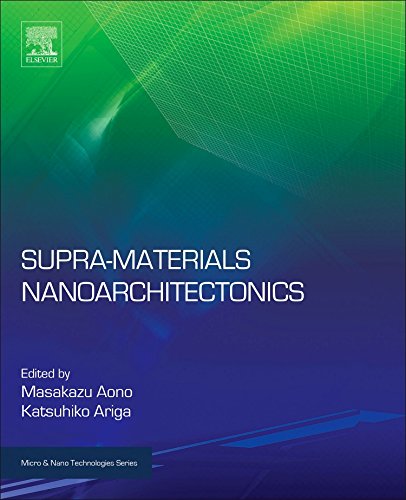
Product details:
ISBN-10 : 0323994733
ISBN-13 : 9780323994736
Author: Katsuhiko Ariga
Materials Nanoarchitectonics: From Integrated Molecular Systems to Advanced Devices provides the latest information on the design and molecular manipulation of self-organized hierarchically structured systems using tailor-made nanoscale materials as structural and functional units. The book is organized into three main sections that focus on molecular design of building blocks and hybrid materials, formation of nanostructures, and applications and devices. Bringing together emerging materials, synthetic aspects, nanostructure strategies, and applications, the book aims to support further progress, by offering different perspectives and a strong interdisciplinary approach to this rapidly growing area of innovation.
Supra-Materials Nanoarchitectonics 1st Table of contents:
Chapter 1. Nanoarchitectonics: a land of opportunities
Abstract
1.1 Bottom-up creation of functional materials and devices
References
Chapter 2. Nitrogen functionalities assisted nanoporous carbon materials for supercapacitor studies
Abstract
2.1 Introduction
2.2 Effect of morphology, pore structure, and heteroatoms functionalization on capacitive behavior
2.3 Electrolyte influence and its limitation on overall performance
2.4 Concluding remarks
References
Chapter 3. Membrane nanoarchitectonics: advanced nanoporous membranes for osmotic power generation
Abstract
3.1 Introduction
3.2 Fundamental concepts
3.3 Fabrication of advanced reverse electrodialysis nanoporous membranes
3.4 Recent advances in upscaled membranes
3.5 Current limitations and challenges
3.6 Conclusions
References
Chapter 4. Biointerfacial nanoarchitectonics: layer-by-layer assembly as a versatile technique for the fabrication of highly functional nanocoatings of biological interest
Abstract
4.1 Introduction
4.2 The layer-by-layer technique
4.3 Interactions of materials with living systems
4.4 Selected examples of the application of the layer-by-layer technique in biosciences
4.5 Cell encapsulation and cell modification by layer-by-layer technique
4.6 Conclusions
References
Chapter 5. Charged porphyrins as building blocks of π-electronic ion-pairing assemblies
Abstract
5.1 Introduction
5.2 Porphyrins with charged substituents at the meso positions
5.3 Porphyrins charged at the porphyrin skeleton
5.4 π-Electronic ion-pairing assemblies of charged porphyrins
5.5 Summary and future perspective
References
Chapter 6. Layered structures in soft nanoarchitectonics: towards functional photonic materials
Abstract
6.1 Introduction
6.2 Naturally existing layered structures
6.3 Fabrication of nanoarchitectonics with layered structures in soft materials
6.4 Potential applications
6.5 Excellent mechanical properties of nanoscale layered structures in soft materials
6.6 Outlook and perspectives
Acknowledgments
References
Chapter 7. Metal Nanoarchitectonics: Fabrication of Sophisticated Gold Nanostructures for Functional Plasmonic Devices
Abstract
7.1 Introduction
7.2 Stimuli-responsive metal nanoparticles for configurable structures via assembly/disassembly
7.3 Nanoparticle assembly control with the aid of polymers as an additive
7.4 Precise active control of plasmonic nanostructures on polymer gels as a substrate
7.5 Active alignment control of gold nanorods with the aid of polymers brushes
7.6 Conclusion
References
Chapter 8. Molecular Imprinting as Key Technology for Smart Nanoarchitectonics
Abstract
8.1 Introduction
8.2 Some technical details of molecular imprinting
8.3 Tactics to improve the guest-binding activity and selectivity of MIP
8.4 Examples of practical applications of MIP to nanoarchitectonics
8.5 Conclusions
References
Further Reading
Chapter 9. Self-assembled structures as emerging cellular scaffolds
Abstract
9.1 Introduction
9.2 Self-assembled structures
9.3 Methods for the construction of self-assembled structures
9.4 Applications
9.5 Conclusion
References
Chapter 10. 2D materials-based nanoarchitectonics for metal-ion batteries
Abstract
10.1 Introduction: novel materials for battery electrodes
10.2 Nanoarchitected structures applied to metal-ion batteries
10.3 Conclusions
Acknowledgments
References
Chapter 11. Thin film nanoarchitectonics via Langmuir–Blodgett and layer-by-layer methods
Abstract
11.1 Introduction
11.2 Langmuir–Blodgett nanoarchitectonics
11.3 Layer-by-layer nanoarchitectonics
11.4 Short perspective
References
Chapter 12. Langmuir films—a universal method for fabricating organized monolayers from nanomaterials
Abstract
12.1 Introduction
12.2 History and present of Langmuir films
12.3 Experimental details
12.4 Applications
12.5 Summary
References
Chapter 13. MXenes and their applications in sensors
Abstract
13.1 MXenes’ properties
13.2 MXenes synthesis
13.3 MXenes and their applications in biosensors
13.4 MXenes and their applications in strain sensor
13.5 MXenes and their applications in pressure sensor
13.6 MXenes in gas sensors
References
Chapter 14. Composite materials based on mesoporous oxides and noble metal nanoparticles
Abstract
14.1 Introduction
14.2 Mesoporous oxides as support for metallic nanoparticles
14.3 Mesoporous oxides as stabilizers for nanoparticles
14.4 Mesoporous oxides as hosts for functional molecules
14.5 Mesoporous oxides as active hosts
14.6 Mesoporous oxides as filters
14.7 Conclusions and perspectives
Acknowledgments
References
Chapter 15. Nanoarchitectonics of Metal–Organic Frameworks (MOFs) for energy and sensing applications
Abstract
15.1 Introduction
15.2 Common strategies for the integration of metal–organic frameworks into nanoarchitectonic objects
15.3 Nanoarchitectonics for the integration of metal–organic frameworks into electrochemical devices
15.4 Nanoarchitectonics for the integration of metal–organic frameworks into electronic devices, nanoporous membranes, and photoresponsive materials
15.5 Conclusions and outlook
References
Chapter 16. Ionic nanoarchitectonics for nanochannel-based biosensing devices
Abstract
16.1 Introduction
16.2 Fundamental concepts in ion transport across nanopores and nanochannels for biosensing applications
16.3 Nanofabrication and functionalization techniques
16.4 Biosensors based on solid-state nanochannels
16.5 Conclusions
Acknowledgments
References
Chapter 17. Molecular, supramolecular, and macromolecular engineering at hybrid mesoporous interfaces: choose your own nanoarchitectonic adventure
Abstract
17.1 Introduction—“soft chemistry” serving as a bridge toward nanoarchitected hybrid materials
17.2 Design of hybrid organic–inorganic materials synthesized via sol–gel chemistry
17.3 Integration of functional molecular assemblies and supramolecular machineries into/onto mesostructured oxide supports
17.4 Incorporation of macromolecular building blocks into mesoporous materials—Synthetic strategies toward functional hybrid polymer–inorganic mesostructures
17.5 Spatially-addressing macromolecular functional units on mesoporous supports—tailoring “inner” and “outer” chemistries in hybrid nanostructured assemblies
17.6 Conclusions
References
Chapter 18. Nanomaterials and catalysis
Abstract
18.1 Overview: nanoscience and catalysis
18.2 Design of model catalytic systems
18.3 Challenges and selected state-of-art characterization techniques for nanomaterials and heterogeneous catalysts
18.4 Probing the catalyst complexity: the AuCu system
18.5 Conclusions
References
Chapter 19. Design of supramolecular chemosensor arrays and their applications to optical chips
Abstract
19.1 Introduction
19.2 General introduction of chemosensors
19.3 Realization of chemosensor arrays for real sample analysis
19.4 Conclusion and perspective
References
Chapter 20. 3D graphene fabrication and application for energy storage systems
Abstract
20.1 Introduction
20.2 Fabrication of 3D graphene-based nanomaterials
20.3 Applications for energy storage systems
20.4 Conclusion
People also search for Supra-Materials Nanoarchitectonics 1st:
electronic materials with nanoscale curved geometries
nano-engineered materials
graphene supercapacitor manufacturers
graphene superconductor
graphene superconductivity
Tags:
Supra Materials,Nanoarchitectonics,Katsuhiko Ariga
You may also like…
Engineering - Electrical & Electronic Engineering
Engineering - Electrical & Electronic Engineering
Engenharia de Controle Moderno 5th edition by Katsuhiko Ogata B013H5WK20
Engineering - Mechanical Engineering & Dynamics
Engineering
Engineering
Technique - Automation


